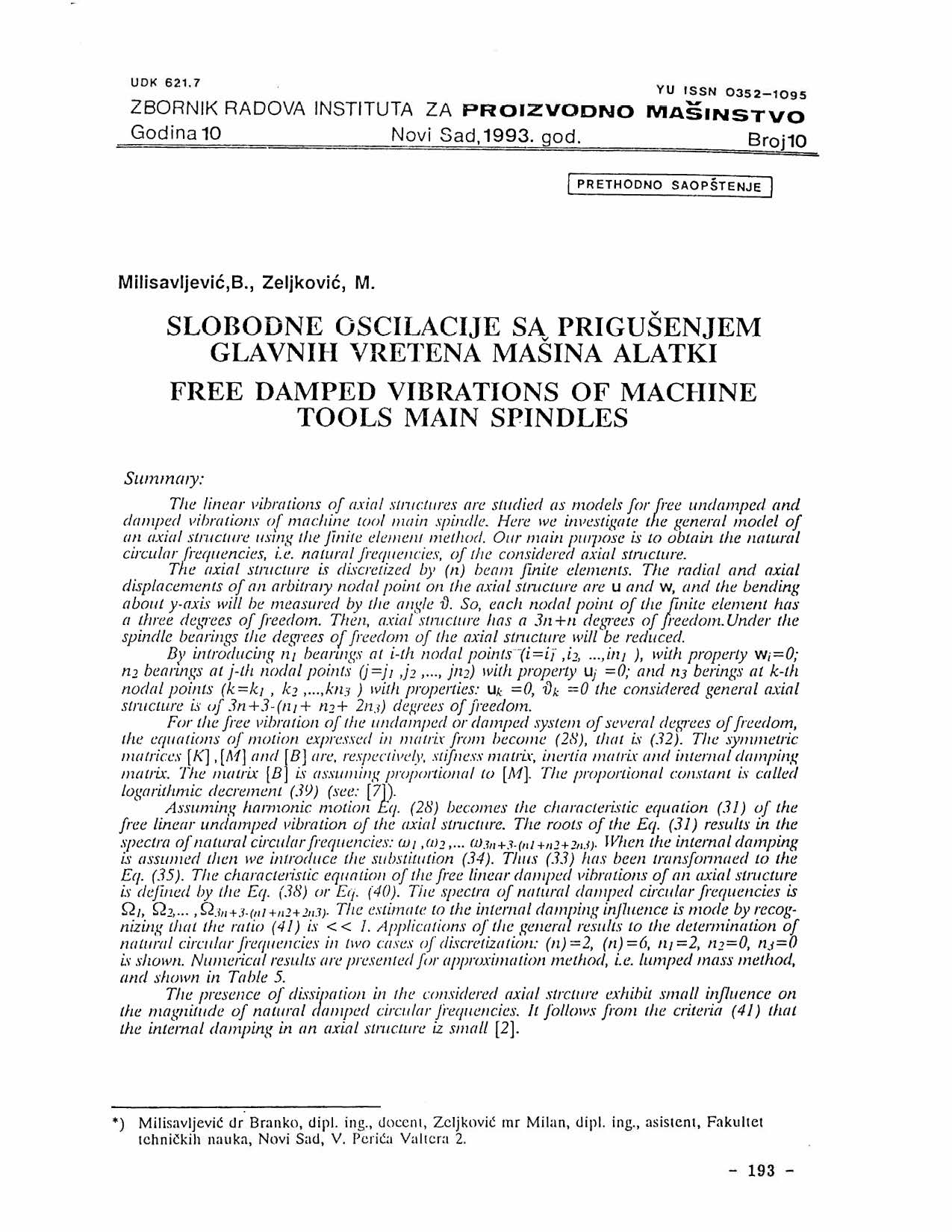
Published 1993-12-01
abstract views: 11 // FULL TEXT ARTICLE (PDF): 4
Keywords
- linear vibrations,
- axial structures,
- vibrations
How to Cite
Copyright (c) 2023 Journal of Production Engineering

This work is licensed under a Creative Commons Attribution 4.0 International License.
Abstract
The linear vibrations of axial structures are studied as models for free, undamped, and damped vibrations of machine tool main spindles. In this study, we investigate the general model of an axial structure using the finite element method. Our main purpose is to obtain the natural circular frequencies, which are also known as natural frequencies, of the considered axial structure. The axial structure is represented by (n) beam finite elements. The radial and axial displacements of an arbitrary nodal point on the axial silicone are denoted as 'u' and 'w,' while the bending about the y-axis is measured by the angle 'D.' Each nodal point of the finite element has three degrees of freedom. Therefore, the axial structure has a total of 3n + n degrees of freedom. The presence of spindle bearings can reduce the degrees of freedom of the axial structure. By introducing radial bearings at certain nodal points (i.e., i1, i2, …, in1) with properties w_i = 0, n2 bearings at j-th nodal points (i = 1, 2, ..., n2) with properties u_j = 0, and n3 bearings at k-th nodal points (k = k1, k2, ..., k3) with properties u_k = 0 and D_k = 0, the considered general axial structure has 3n + 3 - (n1 + n2 + 2 * n3) degrees of freedom. For the free vibration of the undamped or damped system with several degrees of freedom, the equations of motion expressed in matrix form are represented by equations (28) and (32). The symmetric matrices [K], [M], and [B] correspond to the stiffness matrix, inertia matrix, and internal damping matrix, respectively. The parameter λ is assumed to be proportional to [M] and is called the logarithmic decrement (see [71]). Assuming harmonic motion, equation (28) becomes the characteristic equation (31) for the free linear undamped vibration of the axial structure. The roots of equation (31) yield the spectra of natural circular frequencies: ω1, ω2, ..., ωn+3. When internal damping is considered, we introduce the substitution (34). Equation (33) is then transformed into equation (35). The characteristic equation for the free linear damped vibrations of an axial structure is defined by equation (38) or equation (40). The spectra of natural damped circular frequencies are denoted as Q1, Q2, ..., Qn+3 - (n1 + n2 + n3). The assessment of the influence of internal damping is made by recognizing that the ratio (41) is << 1. Applications of these general results for the determination of natural circular frequencies are demonstrated in two cases of discretization: (n) = 2 and (n) = 6, with n1 = 2, n2 = 0, n3 = 0. Numerical results are presented for an approximation method, such as the lumped mass method, and are shown in Table 5. The presence of dissipation in the considered axial structure has a small influence on the magnitude of natural damped circular frequencies. It follows from the criteria (41) that internal damping in an axial structure is small [2].

